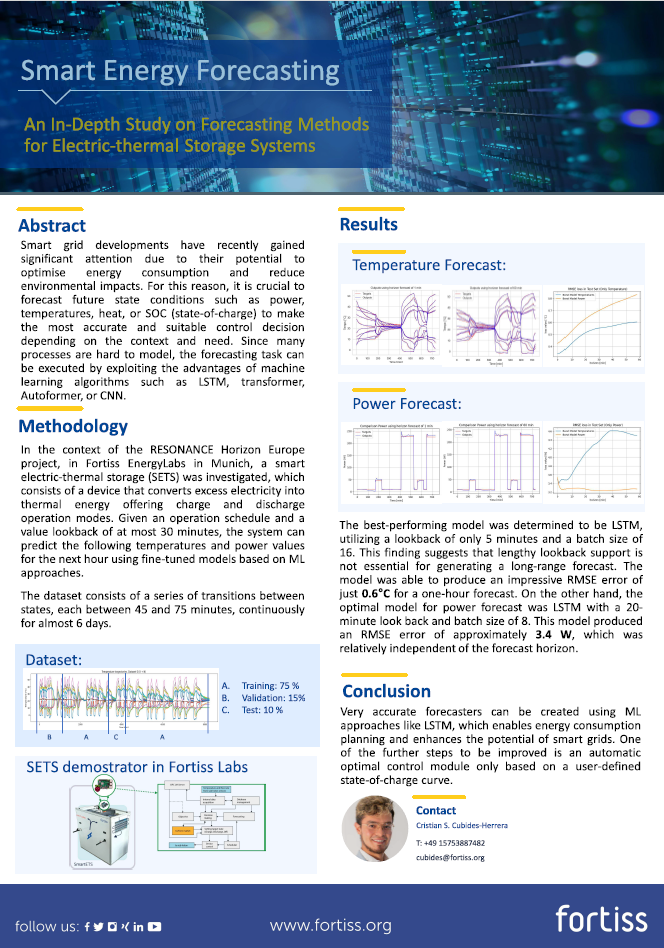Poster presentation for SMARTGREENS 2024 13th International Conference on Smart Cities and Green ICT Systems, Angers, France 2-4 May 2024
Speaker: Cristian Sebastian Cubides Herrera fortiss GmbH, Guerickestrasse 25, 80805 Munich, Germany. Co-authors: Jan Mayer (fortiss GmbH), Jessy Matar and Markus Duchon (Fortiss Research Institute)
Abstract:
Motivation and Research Question: Smart grid developments have recently gained significant attention due to their potential to optimise energy consumption and reduce environmental impacts. For this reason, it is crucial to forecast future state conditions such as power, temperatures, heat, or SOC (state-of-charge) to make the most accurate and suitable control decision depending on the context and need. Since many processes are hard to model, the forecasting task can be executed by exploiting the advantages of machine learning algorithms such as LSTM, transformer, Autoformer, or CNN.
In the context of the RESONANCE Horizon Europe project, in Fortiss EnergyLabs in Munich, we investigate a smart electric-thermal storage (SETS), which consists of a device that converts excess electricity into thermal energy. The system is equipped with 10 temperature sensors and a recently incorporated power measurement point. Implementing an optimal control module of a smart device, which is responsible for managing a resource, includes its profile and flexibility forecasts, hence the importance of achieving a high accuracy forecasting of the parameters. The central question from this scenario is: which forecasting method is the most effective for this use case, and to what extent can past data with missing features (such as power) be used to augment the current training data?
Findings and Future Work: We have established a precise predictive model for the SETS, ensuring consistent and reliable temperature and power time series one-hour forecasts, establishing an optimal looking-back length of 10 minutes. In the process, we benchmarked state-of-the-art ML architectures, by which LSTM outperformed the other structures in terms of test error and computational cost. Additionally, we used already saved data without power information to perform data augmentation, attenuating the common oscillations present on the complete but small dataset even when the old dataset did not have any recorded power data. Finally, leveraging this enhanced predictive capability, we can now calculate the SOC of the SETS device, aligning its operation with the specific needs of users or central resource administrators. As a future step, we aim to implement an automatic control module that utilises these predictions to optimise energy management further.





